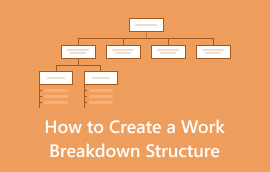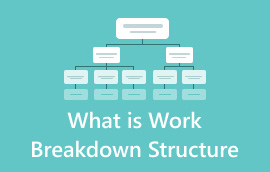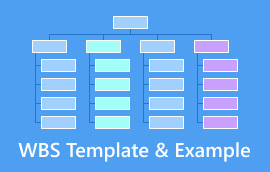Struktura Rêxistinî ya Wezareta IT: Fêr bibe Afirînerê
Xwedî avahiyek rêxistinî ya mezin aliyekî krîtîk e ku her karsaziyek ku teknolojiyê bikar tîne divê pêk bîne da ku wê bi bandor birêve bibe û di xebatê de bimîne. Ew hemî li ser ravekirina rola tîmên we, sêwirana peywiran ji bo wan, û hûrgulîkirina xebata di nav beşan de ye. Ev ê bi kîjan strukturê herî baş li gorî hewcedariyên pargîdaniya we tê ve girêdayî ye: fonksiyonel, dabeşî, an matrix. Ji bo wê, bidestxistina van hûrguliyan dikare karbidestî, ragihandin û xebata tîmê ya beşê bi girîngî baştir bike. Wekî din, nuha hêsan e ku meriv nexşeyek organîzasyona IT-ya şefaf bi karanîna bernameya çêtirîn biafirîne, û em di vê gotarê de li ser wan hûrgulî biçin.

- Beş 1. Struktura Rêxistinî ya IT çi ye
- Beş 2. Cureyên Structure Rêxistinî IT
- Beş 3. Feydeyên Struktura Rêxistinî ya IT
- Beş 4. Amûra çêtirîn a çêkirina nexşeyê ji bo Struktura Rêxistinî ya IT
- Beş 5. Pirs û Pirs di derbarê Structure Organisation IT
Beş 1. Struktura Rêxistinî ya IT çi ye
An avahiya rêxistinî çarçoveyek e ku diyar dike ku ji bo pêkanîna armancên rêxistinê hin karan çawa têne meşandin. Rol, berpirsiyarî û norm dikarin beşek ji van çalakiyan bin.
Awayê ku agahdarî di nav rêzên rêxistinê de dimeşe jî ji hêla strukturên wê yên rêxistinî ve tê destnîşankirin. Di avahiyek navendî de biryar li jor têne girtin. Avahiyek nenavendî desthilatdariya biryargirtinê di nav astên rêxistinê de belav dike. Damezrandina avahiyek rêxistinî dihêle ku karsazî baldar û hilberîner bimînin.
Beş 2. Cureyên Structure Rêxistinî IT
Structure Functional / Role-based
Yek ji celebên herî berbelav ên strukturên rêxistinî strukturên fonksîyonel an-based rol e. Struktura vertîkal, hiyerarşîk a vê rêxistinê serkirdayetiya navendî vedihewîne û ji hêla rolên diyarkirî, peywirên kar, zincîreyên fermanê, û desthilata biryardanê ve tê destnîşan kirin. Berpirsiyarî, pîvanbûn, û pisporî ji hêla çarçoveyek fonksiyonel ve hêsantir têne çêkirin. Di heman demê de zincîreyek fermanê ya baş diyarkirî heye û bendewariyan destnîşan dike.

Structure-based Market
Struktura hilber-an-bingeha bazarê ji bilî avahiya fonksiyonel, vertîkal, hiyerarşîk û navendî ye. Digel vê yekê, ew ji bilî rolên adetî û çalakiyên kar li dora hilber an bazarên pargîdaniyê têne organîze kirin. Pargîdaniyên ku pir xetên hilber an bazarê hene dikarin ji vê celebê avahiyê sûd werbigirin, lê mezinkirina wê dikare dijwar be.
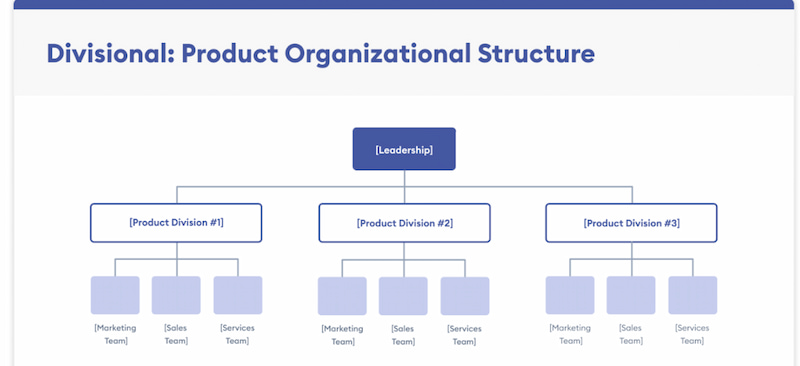
Structure-based Process
Struktura-based pêvajoyê tête organîze kirin ku çerxa jiyanê ya malek an karûbarek neynik bike, mîna avahiya fonksiyonel. Mînakî, avahî dikare li R&D, pêşkeftina hilberê, pêkanîna fermanê, fatûrekirin, û piştgiriya xerîdar were dabeş kirin. Ger pêwendiyê pêşanî neyê dayîn, ev avahî dikare pisporî, karîgerî û xebata tîmê pêş bixe, lê ew dikare di navbera tîmê de jî bibe sedema astengiyan.
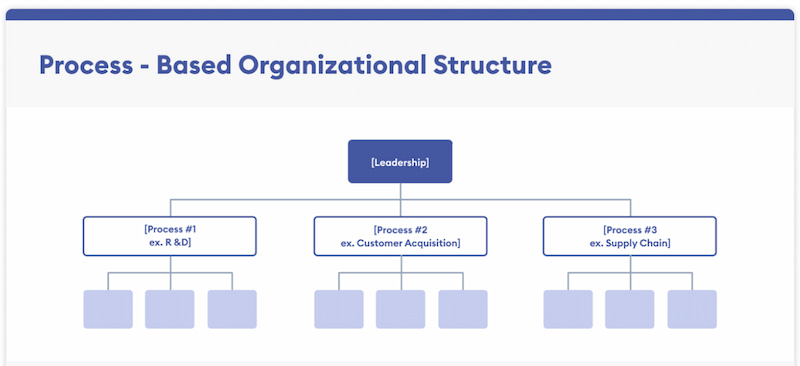
Structure Matrix
Struktura rêxistinî ya matrixê gelek berpirsiyariyên raporkirinê hene. Mînakî, dibe ku pisporek kirrûbirrê were hêvî kirin ku ji tîmên hilber û kirrûbirrê re rapor bike. Avahiyek matrixê di nav rêxistinê de nermbûn, parvekirina çavkaniyê û xebata tîmê pêşve dike. Lêbelê, ji ber tevliheviya wê, strukturên rêxistinî dikarin di derheqê danûstendin û berpirsiyariyê de, nemaze ji bo kirêgirtiyên nû, bibe sedema têgihîştinê.

Beş 3. Feydeyên Struktura Rêxistinî ya IT
Pargîdaniyek ku xwedan avahiyek rêxistinî ya IT-ya bikêr e pir sûd werdigire. Bi eşkerekirina rol û berpirsiyariyan bi rastî ew tevliheviyê kêm dike û proseduran hêsan dike, ku hilberîneriyê zêde dike. Tîmên ku dikarin di nav sînorên fonksiyonel de hevkariyê bikin di danûstandin û çareserkirina pirsgirêkan de bi hev re çêtir in, ku ev hevkariyê zêde dike. Diyarkirina berpirsiyariyan û piştrastkirina ku peywir di wextê xwe de têne qedandin jî berpirsiyariyê zêde dike. Di heman demê de ew dibe alîkar ku IT-ê bi armancên karsaziyê re yek bikin, ku pêşîgirtina projeyên nirx-zêdekirinê hêsantir dike. Di dawiyê de, nûbûnek çêtir, zûtirîn biryargirtin, û mezinbûna giştî ya rêxistinî dibe ku ji beşa IT-ê ya bikêr encam bibe.
Bi kurtasî, damezrandina avahiyek rêxistinî ya ku li gorî operasyon, armanc û mebestên karsaziyê ye, gelek avantajên xwe hene. Bi eşkere endamên karmendan ji vê agahiyê agahdar dikin.
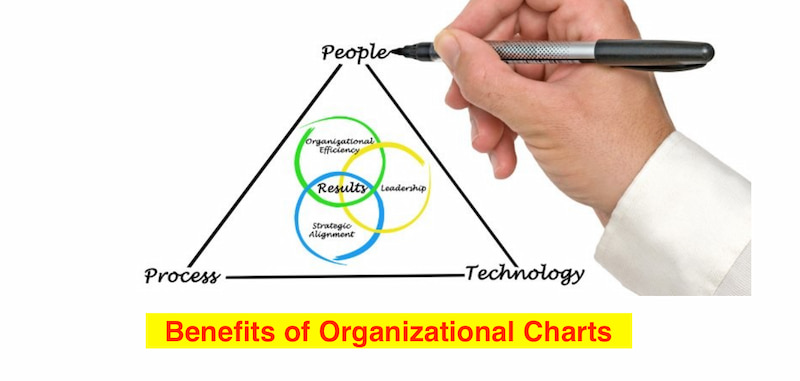
• Berpirsiyariyê ava dike
• Hêviyên xwe zelal dike
• pêdiviyên pêşveçûnê tomar dike
• Desthilatdariya biryaran dide
• bandorbûnê çêdike
• Hevkariyê teşwîq dike
Beş 4. Amûra çêtirîn a çêkirina nexşeyê ji bo Struktura Rêxistinî ya IT
MindOnMap
Me di derbarê strukturên IT Org de, ji pênasîn, feyde û celebên wê gelek agahdarî peyda kir. Ji bo wê, ka em niha li ser tiştê girîng pêşde biçin: pêvajoya çêkirina wê.
Afirandina avahiyek Rêxistinek IT-ê hêsan e heya ku li kêleka me MindOnMap hebe. Ev amûr di dayîna taybetmendiyên ku em dikarin di afirandina nexşeyên bikêr de bikar bînin, wekî sazûmanek rêxistinî ya ji bo beşa IT-ê girîng e. Ji wê zêdetir, şikil û hêmanên awarte dikarin ji bo yek gavê werin bikar anîn. Ji wê zêdetir, amûr ji her kesî re belaş û gihîştî ye. Em tenê hewce ne ku biçin malpera wê ya fermî an jî ji bo taybetmendiyên profesyonel zêdetir nermalava mezin dakêşin. Bi rastî, bi MindOnMaps re, em dikarin ji bo xebatek mezin a beşê xwedî encamek ecêb a nexşeyek rêxistinî ya IT-yê bin.
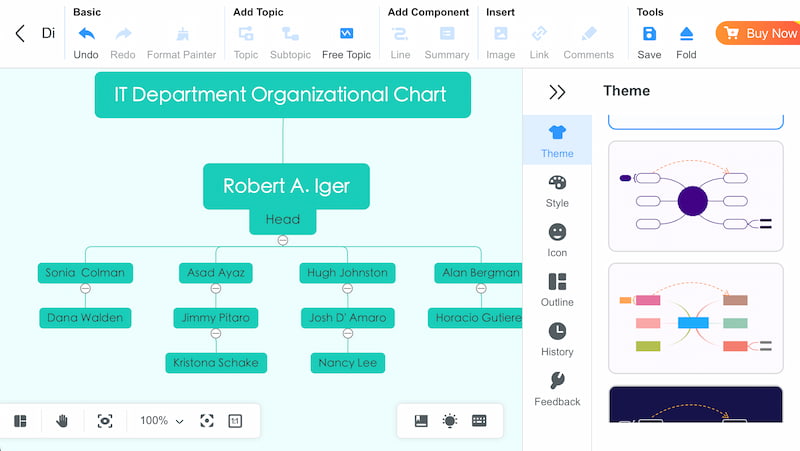
Taybetmendiyên sereke
• Nexşeyên cûrbecûr ên mîna Org Charts biafirînin.
• Şablonên org MindMaps berdest in.
• Vekirina girêdan û wêneyan gengaz e.
• Pêvajoya tomarkirinê ya otomatîkî.
• Wide encam pelên media format.
Beş 5. Pirs û Pirs di derbarê Structure Organisation IT
Kîjan avahiya rêxistinî ji bo pargîdaniya IT-ê çêtirîn e?
Struktura matrixê bi gelemperî ji bo pargîdaniyek IT-ê strukturek rêxistinî ya herî bi bandor e. Ev avahî hevkarî û adaptebûnê di nav beşên cûrbecûr rêxistinî de hêsan dike û balansek di navbera tîmên proje-based û qadên fonksiyonel ên pispor ên mîna pêşkeftina nermalavê an piştgiriya IT-ê de çêdike.
Rêxistinek nûjen a IT-ê çawa xuya dike?
Bi gelemperî, rêxistinek nûjen a IT-ê ewr-rêveber e, veguherîna dîjîtal-balkêş e, û jêhatî ye. Ew ji hêla otomasyon, tîmên cross-fonksîyonî, prosedurên DevOps, û baldarî li ser ewlehiya sîber ve tê cûda kirin. Ji ber vê strukturê rêxistinî, beşa IT-ê dikare nûbûnê pêş bixe û bilez bertek nîşanî guheztina hewcedariyên karsaziyê bide.
Beşek IT ji çi pêk tê?
Di bin IT de beşên cûda hene. Pêşîn, Binesaziya ku berpirsiyarê torê û hardware ye. Pêşveçûn, li ser nermalavê û sepanan hûr dibe. Dûv re, Ewlekarî ewlehiya sîber û parastina daneyê misoger dike, û Operasyon databases, karûbarên ewr, û pêvajoyên giştî yên IT-ê birêve dibin. Ev hêmanên sereke yên tîpîk ên beşa IT-ê ne.
Beşa IT a rêxistinê çi fonksiyonê dike?
Beşa IT-ê rêveçûna bêkêmasî ya hemî karûbarên teknolojiyê yên di hundurê rêxistinê de garantî dike. Ew çavdêriya binesaziya torê, arîkariya teknîkî, hardware, nermalavê, û ewlehiya sîber ji bo karsaziyê dike.
Çi operasyonên IT-ê ji piştgiriya IT-ê cuda dike?
Alîkariya bikarhênerên dawî yên bi pirsgirêkên teknîkî re, debugkirina hardware û nermalavê, û garantîkirina bextewariya bikarhêner armancên sereke yên piştgiriya IT-ê ne. Berevajî vê, operasyonên IT-ê bi rêvebirin û domandina pergalên bingehîn ên IT-yê yên wekî server, databas, û binesaziya torê ve dem û performansê peyda dikin.
Xelasî
Di encamê de, em dikarin bibînin ka Struktura rêxistinî ya IT-ê li ser çi ye û cewhera wê di pîşesaziyê de çi ye. Ji wê zêdetir, em dikarin hin cûreyên wê yên ku em dikarin di senaryoyên cihêreng de bikar bînin bibînin. Lê ya herî girîng, me amûrek mezin dît ku dikare ji me re bibe alîkar ku nexşeyek rêxistinî ya IT-ê bi gavên hêsan û hêmanên mezin çêbikin. Ew MindOnMap e, ku armanc dike ku ji bikarhêneran re bibe alîkar ku wan nexşeyek çêbikin. Bi hebûna taybetmendiya xwe ya berfireh, rêxistinek bêhempa bê guman heye.








